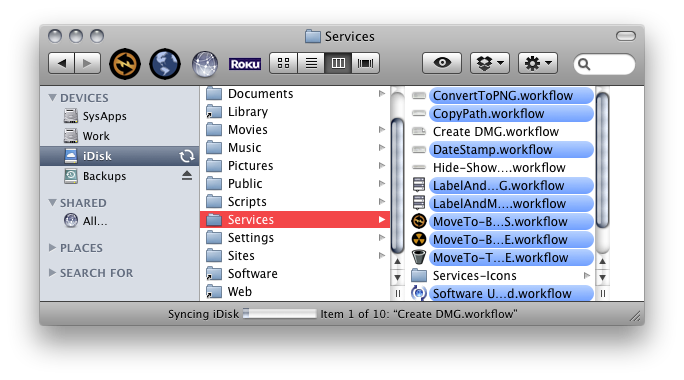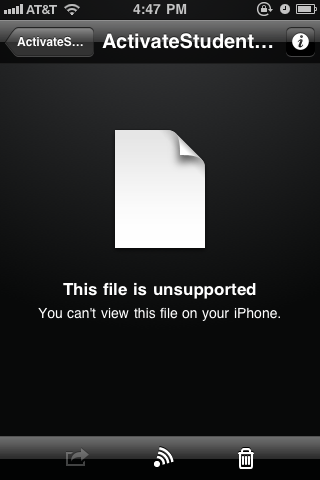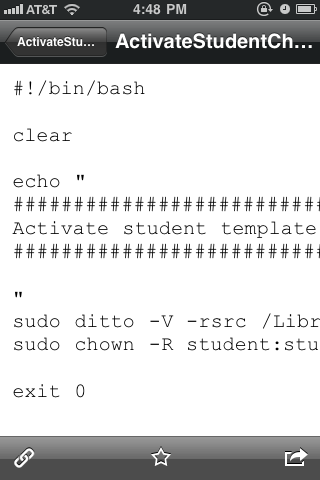So I've been using Dropbox for quite some time now and I've been extremely pleased with it. It keeps my stuff in sync, and I don't have to even think about it. And that's what you want from a service like Dropbox: seamlessness; ease-of-use; freedom from worry.
I'm using the free version, so I only get 2GB of storage. This has been plenty for me so far, but I often wonder about what I should do if I ever hit that limit.
I've also been using Mobile Me for just over a year. I mainly got it to tinker with, as well as for the off chance that I should someday lose my iPhone. In addition to the various things you can do with MobileMe — none of which I ever actually do, it turns out — you get 10GB of disk space on your WebDav-connected iDisk, and this can be synced to any computer you sign on to much like your Dropbox account is synced. So I've been tempted to replace Dropbox with MobileMe, since I'm paying for it anyway. Before going ahead with a dedicated switch, though, I thought I'd give it a try for a while first. See how it stacks up against Dropbox.
It turns out — and this will probably come as no surprise to current MobileMe subscribers — that the iDisk functionality is problematic for a number of reasons.
First of all, MobileMe occasionally tells me that there is a sync conflict, despite the fact that I've told it to always keep the latest version of a file. This is something you never see with Dropbox. Ever. I'm not sure how the two services differ in terms of their syncing algorithms, but Dropbox definitely has the edge.
But perhaps more disturbing is the fact that MobileMe — an Apple-hosted service, mind you — doesn't seem to be able to retain Mac-specific data on certain files synced to iDisk. Case in point: Remember when I told you about adding icons to your Services to make them clearer and prettier? Well, I wanted to store those Services in the cloud for easy access from any computer. When I copied them to my local iDisk, everything appeared to be just fine.
But as soon as the sync began, the icons and labels all started disappearing.
In the end, MobileMe stripped off all the labels and icons from my files.
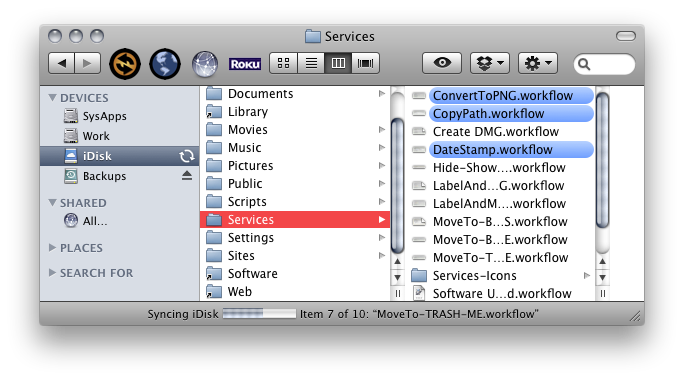 I'm not sure why Apple's own file syncing service is incapable of handling Mac-specific data, but this works just fine using Dropbox. And Dropbox wins on seamlessness too. So if I ever do have to spend some money on this, that money will be going to Dropbox. It really is a terrific, versatile service, and it's very Mac-compatible.
I'm not sure why Apple's own file syncing service is incapable of handling Mac-specific data, but this works just fine using Dropbox. And Dropbox wins on seamlessness too. So if I ever do have to spend some money on this, that money will be going to Dropbox. It really is a terrific, versatile service, and it's very Mac-compatible.
UPDATE:
Another advantage that Dropbox has over iDisk is its iPhone app. Both let you read documents directly from the online storage, but Dropbox is actually smarter about file types, particularly when it comes to text files. The iDisk app on iPhone will not allow me to read text files that end with the .sh suffix (or, I'd wager, any text file that doesn't end with .txt), saying that the file type is not supported.
Dropbox for iPhone, on the other hand, will recognize those files as text files and display them as such.
This is a big deal for me because one of the main uses I have for these services is constant access to my scripts in the field. They're essentially my shell scripting field reference. But unless they have a .txt suffix, MobileMe's iDisk for iPhone just won't display them.
UPDATE 2:
It turns out that Dropbox isn't perfect with regards to extended attributes after all. While my Dropbox files on my work machine do seem to retain the labels and icons, the same files at home lack these attributes.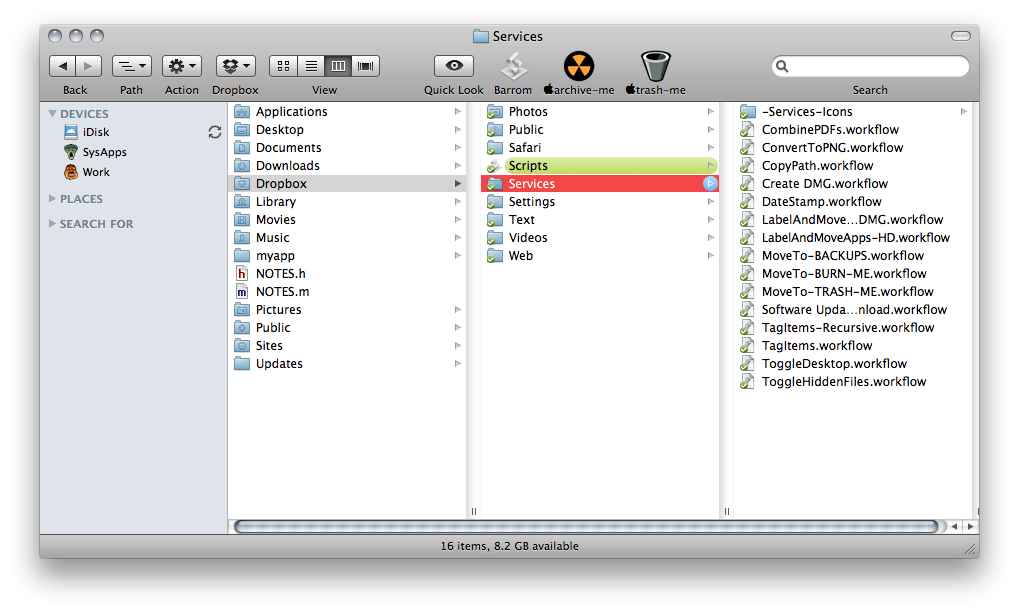
Despite these discrepancies, Dropbox considers these files properly synced. Without the reliable retention of icon data, I will not be able to store my icons using Dropbox's service. And the fact that my home and work Dropbox folders are inconsistent does a great deal to reduce my confidence in the overall reliability of the service. Big ticks in Dropbox's CON column, if you ask me. Bummer.
As per one reader's suggestion, I think I will go ahead and try SugarSync.


